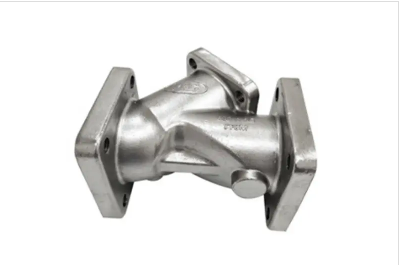Mobile:+86-311-808-126-83
Email:info@ydcastings.com
Brass Die Casting Techniques for High-Quality Metal Components and Efficient Production Processes
Brass Die Casting An Overview of the Process and Its Advantages
Brass die casting is a specialized manufacturing process that involves pouring molten brass into a mold to create intricate and detailed parts. Brass, an alloy made primarily of copper and zinc, offers a combination of properties that make it an ideal material for die casting. It is valued for its excellent corrosion resistance, durability, and aesthetic appeal, making it a popular choice in various industries, including automotive, electronics, plumbing, and decorative applications.
The Die Casting Process
The die casting process begins with melting brass at high temperatures, typically around 900°C (1650°F). Once the brass is molten, it is injected into a precisely machined mold under high pressure. This pressure forces the molten metal to fill every cavity of the mold, allowing for the creation of complex shapes and features, including thin walls and detailed textures.
The mold, usually made from steel, is designed to withstand repeated use, which is essential for mass production. After the molten brass has cooled and solidified within the mold, the die is opened, and the finished part is ejected. This process is rapid, often allowing for the production of hundreds or thousands of parts per day, depending on the complexity of the design.
Advantages of Brass Die Casting
1. Precision and Detail One of the most significant advantages of brass die casting is the ability to produce highly accurate and detailed components. The high-pressure injection process ensures that the molten metal fills all areas of the mold, resulting in exceptional dimensional accuracy and surface finish.
2. Strength and Durability Brass is known for its strength and hardness compared to other non-ferrous metals. Parts produced through die casting can withstand significant stress and strain, making them ideal for applications requiring longevity and reliability.
brass die casting

3. Corrosion Resistance Brass naturally exhibits excellent resistance to corrosion, especially in environments where moisture or chemicals may be present. This property is crucial for components used in plumbing, automotive, and marine applications.
4. Aesthetic Appeal The natural luster of brass adds to its visual appeal. Die-cast components can often be finished with various surface treatments, such as polishing or plating, to enhance their appearance further, making them suitable for decorative applications.
5. Cost-Effectiveness While the initial setup cost for die casting can be high due to the creation of molds, the process becomes cost-effective with large production volumes. The ability to produce many identical parts quickly reduces per-unit costs significantly.
Applications
Brass die casting is used extensively across several industries. In the automotive sector, it is employed for making components such as fittings, connectors, and housings for electronic devices. The plumbing industry utilizes brass die castings for valves, taps, and other fixtures due to their resistance to corrosion and wear. Additionally, brass die casting finds its place in electronics, supporting the production of intricate parts like connectors and housings for devices.
Conclusion
In summary, brass die casting is a highly effective manufacturing process that capitalizes on the desirable properties of brass. Its ability to produce precision parts quickly and economically makes it a preferred choice in various industries. As technology advances, the die casting process continues to evolve, enhancing its capabilities and expanding its applications, further solidifying brass's role as a vital material in modern manufacturing.
-
Why Should You Invest in Superior Pump Castings for Your Equipment?NewsJun.09,2025
-
Unlock Performance Potential with Stainless Impellers and Aluminum End CapsNewsJun.09,2025
-
Revolutionize Your Machinery with Superior Cast Iron and Aluminum ComponentsNewsJun.09,2025
-
Revolutionize Fluid Dynamics with Premium Pump ComponentsNewsJun.09,2025
-
Optimizing Industrial Systems with Essential Valve ComponentsNewsJun.09,2025
-
Elevate Grid Efficiency with High-Precision Power CastingsNewsJun.09,2025











